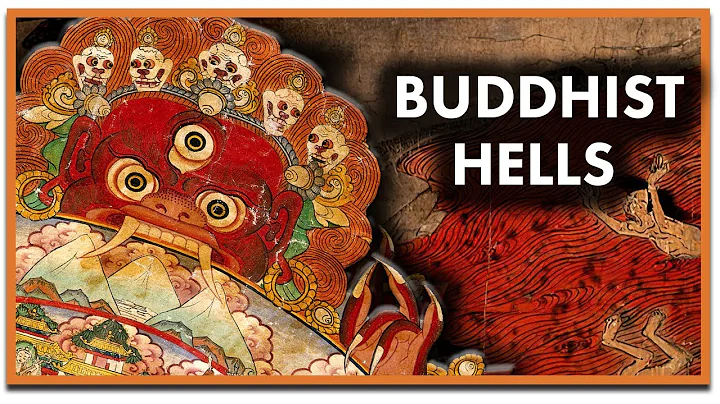
最大学的国大学的大学的大学的大学的大学的大学的大学的大学的大学的大学的大学的大学的大学的大学的大学的大学的大学的大学的大学的大学的大学的大学的大学的大学的大The Buddhist culture is profound and profound, with many classics. When we read and recite scriptures, we often see some formal nouns that appear very frequently, such as "Three Realms", "Bodhisattva", "Anuttara Samyaksambodhi", etc. So what do these Buddhist nouns mean? The editor has compiled sixty nouns and quickly collected them and check them as you use them!
01 Buddha
abbreviated as Buddha or Buddha. It means enlightenment, that is, self-awareness, awakening others, and perfection of enlightenment and practice. The Buddha is a great saint who is fully conscious of the Three Awarenesses.
02 Bodhisattva
is referred to as Bodhisattva. The meaning is to awaken sentient beings, that is, the sentient beings who are greatly awakened. He is a saint who seeks Buddhahood and transforms sentient beings from above.
03 Pratyekabuddha
After listening to the twelve links of cause and effect, he realized the truth of life.
04 The Shravaka
3 He learned the truth by listening to the sound of the Buddha's Four Noble Truths.
05 Arhat
Sanskrit , translated in Chinese as the three meanings of non-birth, destruction of evil, and in accordance with offerings.
06 Bodhi
means enlightenment and path, which is the wisdom realized by the path of enlightenment.
07 Bodhicitta
It is called Bodhicitta.
08 Anuttara Samyaksambodhi
Supreme Awakening. That is the supreme wisdom of truly equal awareness of all truths.
09 All wisdom
The wisdom of Buddha is called all wisdom . Because the Buddha can understand the world and the world beyond the world with super wisdom.
10 All sentient beings
All sentient beings. (Sentient beings are living animals)

11 Yichanti
People who have no good roots and do not believe in Buddhism will never be able to become a Buddha.
12 Two attachments
means self-attachment and Dharma attachment, also known as the two attachments of human and Dharma, or the two attachments of birth Dharma. These are two wrong views. The attachment to the existence of the permanent self is called self-attachment. It is called attachment to all dharmas.
13 Two emptiness
I am empty (to realize the truth that the five aggregates have no self), and the Dharma is empty (to realize the truth that all dharmas are born from emptiness).
14 Two obstacles
Affliction obstacle (obstacle Nirvana), knowledge obstacle (obstruction of true knowledge).
15 Two vehicles
Shravaka Vehicle, Pratyekabuddha Vehicle.
16 The three vehicles
Bodhisattva vehicle, the Shrine Vehicle and the Pratyekabuddha vehicle are collectively called the Three Vehicles.
17 Five Vehicles
people, heaven, shravakas, pratyekabuddhas, and bodhisattvas, collectively called Five Vehicles .
18 Three poisons
Greed, anger, and ignorance can poison the body and life and wisdom life, which is called the Three poisons.
19 Three studies
Precepts, concentration learning, wisdom learning . (Also known as the Three No Leakages.)
20 Three Bodies
Buddha has three bodies: Dharma body, reward body, and incarnation body.

21 Three realms
Desire realm, form realm, formless realm.
22 Three obstacles
Affliction obstacles, karma, and retribution obstacles.
23 Three wisdom
Hearing wisdom, thinking wisdom, and cultivating wisdom.
24 Tripitaka
sutras (Shutara); Vinaya ( Vinaiya ); ; sabha (Abhidharma).
25 Three evil paths
hell, hungry ghosts, beasts.
26 Three Refuges
Take refuge in Buddha, take refuge in Dharma, and take refuge in Sangha. Buddha, Dharma, and Sangha are called the Three Jewels.
27 The method of the Bodhisattva Mahayana
is aimed at saving the world and revitalizing others.
28 Hinayana
The method of the shravakas is to cultivate oneself and self-interest.
29 33km4
body, oral , mental entrepreneurship.
30 Three Dharma Seals
All actions are impermanent, all dharmas have no self, Nirvana and silence are Hinayana Three Dharma Seals (adding the true reality of all dharmas is the four Dharma Seals)

31 Four
The earth is large, the water is large, the fire is large, and the wind is large.
32 Four Truths
Hyd truth , the truth of accumulation, the truth of extinction, the truth of path.
33 Four grade
is the four immeasurable hearts. (1) Compassion and infinite heart (2) Compassion and infinite heart (3) Joy and infinite heart (4) Giving infinite heart.
34 Four grace
Parents’ grace (family), all living beings (social), country grace (country), and Three Treasure grace (religion).
35 The four methods of Bodhisattva
Give, love, benefit, and colleagues.
36 Four virtues
3 Constant, happy, me, purity.
37 Four great vows
All beings are vowed to save endless troubles, vow to eliminate infinite Dharma, vow to learn infinite Dharma, and vow to achieve supreme Buddhahood.
38 Four mindfulnesses
(1) Observe the impure body, (2) Observe the suffering, (3) Observe the impermanence of the mind, (4) Observe the law without self.
39 Four surnames class
Brahmin , Kshatriya , Vaisya , Shoudra .
40 Four kinds of agama sutra
long agama, middle agama, one more agama, mixed agama.
41 Five precepts
do not kill, steal, commit adultery, do not lie, and do not drink alcohol.
42 Five desires
wealth, sex, fame, food, sleep.
43 Five aggregates
Formal aggregate, feeling aggregate, thought aggregate, action aggregate, and consciousness aggregate.
44 Five
The ground is big, the water is big, the fire is big, the wind is big, and the air is big.
45 Wuming
statement, art and clever , medical table, is intellect, is intellected, is intellected, is intellected, is intellected, is intellected, is intellected, is intellected, is intellected, is intellected, is intellected, is intellected, is intellected, is intellected, is intellected, is intellected, is intellected, is intellected, is intellected, is in
46 Five Eyes
naked eyes, heavenly eyes, wisdom eyes, Dharma eyes, Buddha eyes.
47 Five hiding
Greedy, anger, sleep, regret, doubt Dharma cover.
48 Five turbidities
tumour, seeing turbidity, afflictions, sentient beings, and life turbidity.
49 Five evil views
(one) body view (sakya view), (two) extreme view (holding the permanence, holding the view of extermination), (three) evil view (slandering the cause and effect, bad good deeds), (four) view (not the result of the result), (five) precepts and forbidden views (not the cause and measure the cause).
50 Six fundamental troubles
Greed, anger, ignorance, arrogance, doubt, and evil views.

51 Ten confusions
Greed, anger, ignorance, arrogance, doubt, body view, extreme view, evil view, view acquisition view, precepts and prohibitions to obtain view. Also known as ten means .
52 Six roots
Eye roots, ear roots, nose roots, tongue roots, body roots, mind roots.
53 6 dust
Color dust, sound dust, fragrance dust, taste dust, touch dust, Dharma dust.
54 Six decay
The six dusts of color, sound, fragrance, taste, touch, and Dharma can devour human true nature.
55 Six Paths
days, humans, Asura , hell, hungry ghosts, animals.
56 Ten Dharma Realms
Buddha, Bodhisattva, Pratyekabuddha, Shrine, Heaven, Human, Asura, Hell, Hungry Ghost, Animals.
57 Six Paramitas
is the different name of Six Paramitas , which is giving, keeping precepts, forbearance, diligence, meditation, Prajna .
58 Six and
Body and dwell together, speech and no dispute, mind and joy together, precepts and practice together, benefit and equality, and view and understanding together.
59 Six-phase
total phase, different phase, same phase, different phase, form phase, and bad phase. This six-phase is manifested in both all things and one thing at the same time. Whether in all things or in one thing, they are formed oppositely, at the same time, integrated and interrelated, and unobstructed by each other. From then on, the truth of the origin of the Dharma Realm can be revealed.
60 Six o'clock
3 day three o'clock (morning morning, middle sun, sun out.) Three o'clock at night (first night, middle night, and night after night.)

Picture source | Ten wishes encyclopedia
photography | Ten wishes
photography | Ten wishes
photography | Ten wishes







![[English] Who Am I - Lecture 1 - Ven. Guan Cheng - DayDayNews](https://i.ytimg.com/vi/KU0fUs2It5o/hq720.jpg?sqp=-oaymwEcCNAFEJQDSFXyq4qpAw4IARUAAIhCGAFwAcABBg==&rs=AOn4CLDFpQUN_QwRfC7bmP4sUadq-RcYdg)
![A Moving Masterpiece 清明上河图 [English narration] - DayDayNews](https://i.ytimg.com/vi/kxff-4GktOI/hqdefault.jpg?sqp=-oaymwEcCOADEI4CSFXyq4qpAw4IARUAAIhCGAFwAcABBg==&rs=AOn4CLBtHGLeUpJNCYDJYnZTuISQ1N5Vag)


